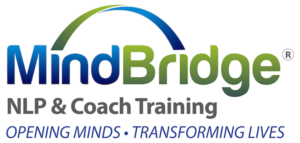
General/Specific
What level or chunk size of information are you comfortable with – the big picture or the details?
This meta program is about which levels of the ‘Hierarchy of Ideas’ the person is comfortable operating with.
A person at the ‘General’ end of the spectrum will think in terms of abstract concepts and generalisations rather than specific details. When faced with too much detail they will feel overwhelmed or bored.
A person at the ‘Specific’ end of the spectrum will feel more comfortable with facts, details and step-by-step sequences. Abstractions, and the big picture on its own, will feel vague and nebulous without more details and specific examples.
Identifying the General/Specific pattern
This pattern will come out in any general conversation. For an example, you could ask the person what they are currently working on, or how their day has been.
The ‘Specific’ preference person’s answer will be in the form of a step-by-step narrative with lots of specific detail. They will use lots of qualifiers (adjectives and adverbs). If you interrupt them, they may start at the beginning again, or else re-start where they left off.
The ‘General’ preference person’s answer will be shorter, in the form of a summary. It may not be in a temporal sequence, but will aim to give you what the speaker sees as the most important aspects first. This may seem like a random order to the listener.
Job role examples
Generally speaking, the higher level of abstraction a person can handle, the higher they can go in an organizational hierarchy (the upper ranks of the army are even called ‘generals’). The ability to think strategically – in other words, to be able to work with high levels of abstraction – is usually essential for board-level roles. Having said that, people need to be able to handle details to perform well at lower levels on their way up.
A detail focus is needed for: quality control, proofreading, health and safety, bookkeeping.
A big picture focus is needed for: leadership, creative roles, Influencing and managing.
As with all the meta programs, match where the person is on the spectrum in order to communicate with them. If you need a ‘General’ person to be more specific, or vice versa, start from where they are and use pacing and leading to help them move up or down the levels of abstraction.
General: give the big picture, the overview, ‘the real issue is…’, ‘in a nutshell’. Calibrate to notice if they are getting bored or overwhelmed with detail.
Specific: use examples and sequences (first…, second…), give detail, exactly, specifically, precisely. Calibrate to notice if they are looking lost or if what you’re saying is going over their head.
